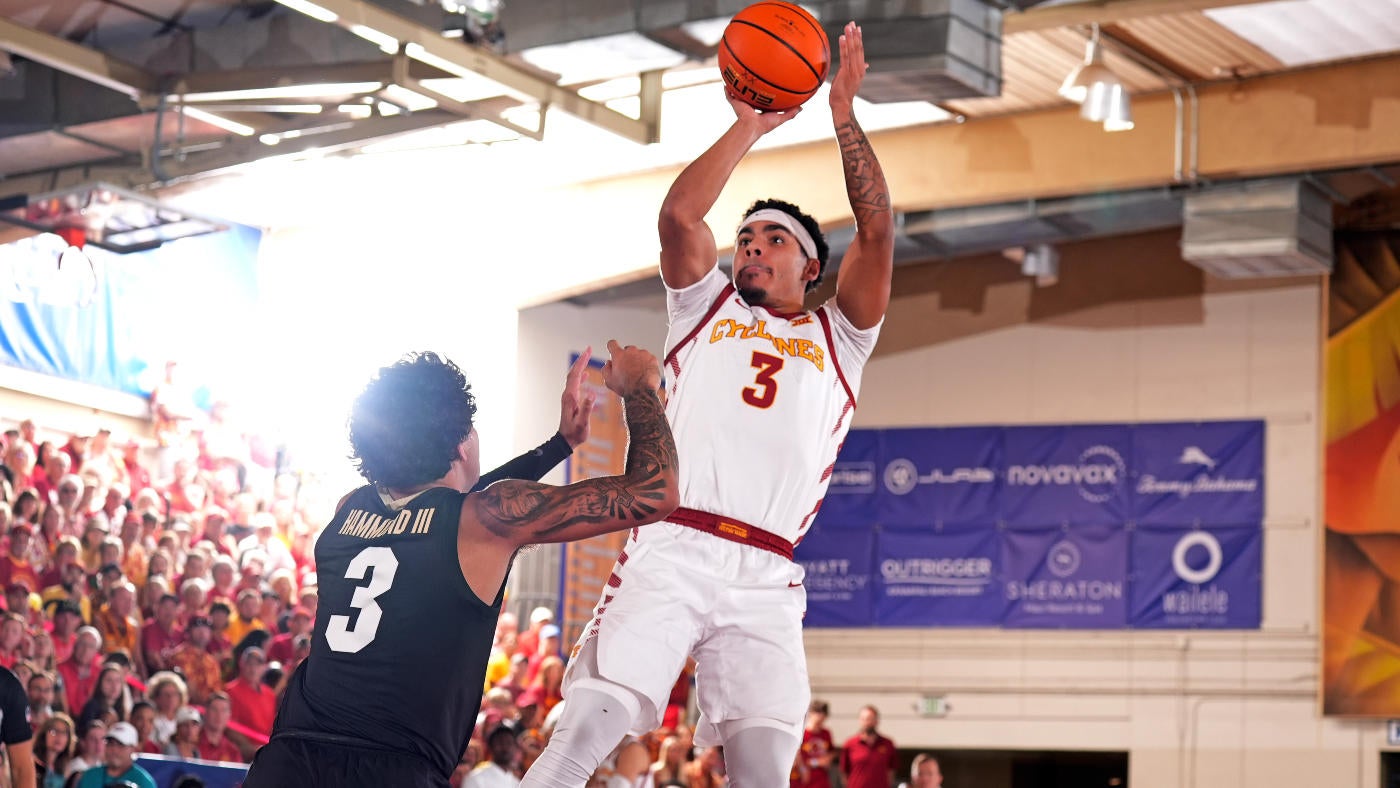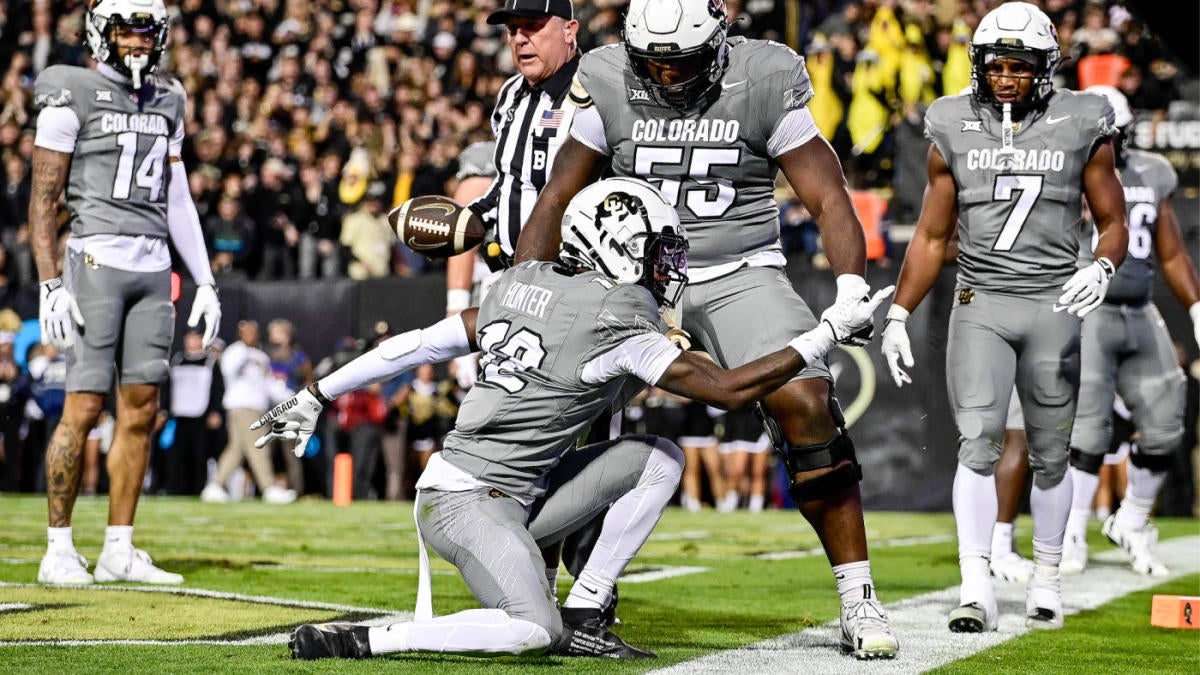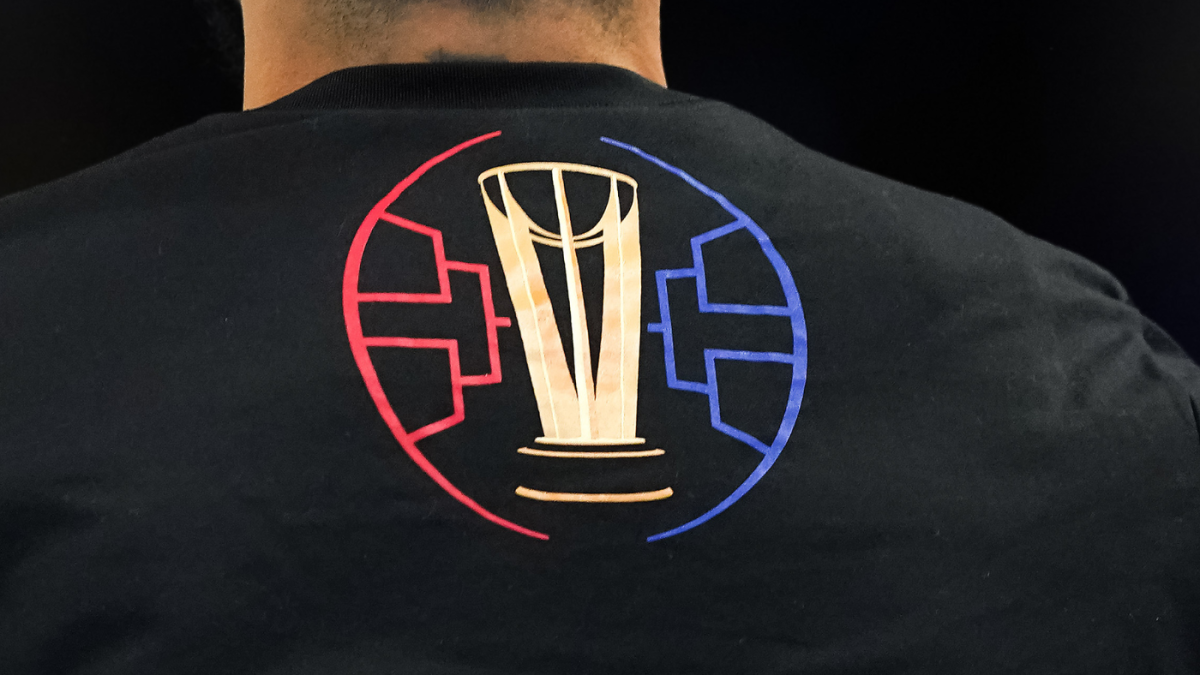
Let’s dive headfirst into this week’s edition of Ten Trends!
1. Inside Iowa State’s soaring offense
If the season ended today (thankfully, it doesn’t), Iowa State would have posted its best offensive rating in the KenPom era which dates back to 1997. Not too shabby for a coach in T.J. Otzelberger who has earned the reputation as one of college basketball’s sharpest defensive masterminds.
Think of the coaches Iowa State has had in the last three decades. Greg McDermott is on the short-list of elite offensive coaches in the sport. Fred Hoiberg’s offensive concepts have long been ahead of the curve and oft-envied. Even Steve Prohm orchestrated multiple Iowa State clubs to top-10 offenses nationally in the late 2010s.
That’s the company Otzelberger is passing up right now.
Iowa State heads into Thursday’s rivalry contest against Iowa with the higher-rated offense for the first time since the 2018 clash. It’s the first of two games in a three-day span. Iowa State will also take on Nebraska-Omaha on Sunday (1 PM ET, CBS Sports Network).
As usual in basketball, everything is connected, but if you’re going to pinpoint one specific area of improvement, it’s Iowa State’s shredding transition offense. Otzelberger has Iowa State running way more than ever, and its transition rate has spiked from 15% last year to nearly 22% of its possessions in 2024-25.
The efficiency is soaring.
Iowa State’s transition offense under T.J. Otzelberger, per Synergy:
- 2024-25: 23.3 PPG
- 2023-24: 13.3 PPG
- 2022-23: 8.1 PPG
- 2021-22: 10.8 PPG
The transfer portal additions are a big reason why.
Iowa State hasn’t had bigs who could make plays like Josh Jefferson in the open floor. His handle isn’t anything to write home about but he’s wildly effective at finding creases and hunting advantages.
You’re not going to find many possessions from last year’s tape of an Iowa State big man making plays like this in the open floor.
Jefferson’s drives have added the extra layer to make everything else fall into place, but he has plenty of help. Keshon Gilbert is a heat-seeking missile in transition. His transition numbers are absolutely bonkers. Gilbert is averaging a ridiculous 7.8 points in transition while shooting a mind-boggling 87% from the floor. He’s taken his game to a new level in Year 2 in Ames. Gilbert is unafraid of taking on two, three or sometimes four defenders in transition.
When Gilbert’s water is turned off at the rim in transition, he usually can find sharpshooter Curtis Jones for open treys. He’s another example of the Year 2 transfer jump. The former Buffalo product is better than ever in his second season under Otzelberger and he’s shooting a sizzling 40% from downtown, including 8-for-12 on transition triples.
Iowa State isn’t just padding the stats against low-major competition, either. The ‘Clones had at least 23 transition points in all three games in Maui against Auburn, Colorado and Dayton.
Of course, bigger challenges are still on the way. Big 12 defenses are so good at grinding games down to halfcourt, hand-to-hand combat and limiting the free cheese in transition. But Iowa State is primed to have extra answers to the test, namely the tough-shotmaking from Milan ‘MoMo’ Momcilovic. The skill, shooting and playmaking that this roster has is far more advanced than previous iterations of Iowa State basketball.
Otzelberger deserves credit, too. He’s finding ways to maximize this group. Dragging games into the mud was Iowa State’s best chance to win a few years ago. Not anymore. Speed it up, baby.
Remember, the four best offenses in college basketball last year made the Elite Eight. Iowa State was better offensively but not in that zip code last year, and Illinois (the No. 3 offense in the sport) took it out in the Sweet 16.
Otzelberger doesn’t want to be left out in the cold this time.
There was four years of data chalked full of 127 games to suggest that Lamont Butler was an average offensive player. Butler had turned himself into a serviceable, low-volume, catch-and-shoot guy who could score at the rim and from the midrange but not overly efficiently.
Butler made up for it with hellacious defense. Oh, and draining one of the biggest shots in San Diego State’s history in the final seconds of the 2023 Final Four against FAU certainly helps, too.
Butler’s decision to transfer to Kentucky made sense because he was supposed to bolster Mark Pope’s point-of-attack defense.
Meanwhile, through eight games, he’s transformed into the best version of himself offensively. The jump is staggering.
Lamont Butler offensive efficiency, per KenPom:
2020-21: 88.7
2021-22: 90.9
2022-23: 99.0
2023-24: 103.1
*transfers to Kentucky*
2024-25: 126.7
Butler shot 52% at the rim in each of the last two seasons. He’s shooting a casual 71% of his rim attempts for Kentucky.
It’s another example of how a new scheme can unlock a version of a player that hadn’t been seen before. Brian Dutcher has built San Diego State into an annual winner, but he prefers to keep the tempo rather slow. Kentucky loves to run and run and run. Butler has been phenomenal in transition, and he’s depantsing defenders in the open floor on his way to the cup.
Butler has been Kentucky’s best two-way player through the first month of the season.
3. Missouri stuns Kansas with new lineup that has to stay
With Caleb Grill sidelined with a neck injury, Missouri’s best five players are as follows: Anthony Robinson, Tamar Bates, Tony Perkins, Mark Mitchell and Josh Gray.
So far this season, that five-man lineup had not played together for a single second.
Until Sunday.
Missouri leaned on that lineup for 19 crucial minutes and outscored Kansas by eight points in the much-needed, 76-67 upset victory.
Dennis Gates has long been willing to go deep into his bench, and he still played 11 scholarship guys against Kansas. But Gates let his best five players cook against the Jayhawks. That’s a lineup that has to be a staple for Missouri going forward. It complements each other too well. Missouri’s rim defense is much-improved with Josh Gray and Mark Mitchell on the floor together. Bates and Perkins are thick, sturdy guards who can create their own offense. Robinson has been a revelation at point guard with some serious sticky hands defensively to boot.
If it worked against Kansas, it can probably be effective in the loaded SEC.
4. Malachi Magic: A deeper look at Dayton’s star point guard Malachi Smith
There’s a heated debate about whether Gonzaga or Purdue has the best initiator point guard in college basketball, but Dayton’s Malachi Smith may be on the verge of asserting himself into that conversation. Smith ranks second in the sport with a dazzling 44.8 assist rate.
Dayton is putting the ball in his hands a ton because it’s working so effectively. Dayton is averaging 15.8 points directly off Smith’s pick-and-rolls. That ranks 16th in college basketball and most of the guys ahead of him are future lottery picks (like Illinois’ Kasparas Jakucionis or Rutgers‘ Dylan Harper) or All-American candidates (like Marquette’s Kam Jones, Purdue’s Braden Smith, Gonzaga’s Ryan Nembhard, Penn State’s Ace Baldwin or New Mexico’s Donovan Dent).
That’s the neighborhood Dayton’s 6-foot junior has moved into. Even with a high 26.5% usage rate, Smith is still managing a whopping 3-to-1, assist-to-turnover ratio.
Dayton hosts No. 6 Marquette on Saturday (7 p.m. ET, CBS Sports Network) in one of its biggest home non-conference games in years. Marquette’s pressure defense makes living eviscerating terrific point guards, but it’s a golden opportunity for Smith to flex against one of the toughest individual defenders in the sport.
His name is Stevie Mitchell and he’s up next in Ten Trends. How do you like that?
5. Stevie Mitchell: Marquette’s fireman
Marquette’s rim protection was a major weakness last year whenever Oso Ighodaro was on the bench. Top-100 opponents shot a whopping 67% at the rim against the Golden Eagles in those 349 possessions, per hoop-explorer.
With Ighodaro off to the NBA, Marquette’s rim defense was supposed to get significantly worse.
That hasn’t happened.
Marquette has played a gauntlet, including Maryland, Purdue, Georgia, Iowa State and Wisconsin. So far, top-100 teams are shooting just 54% at the rim against Marquette.
It takes an army. Marquette’s weak-side rotations are fantastic, but it’s objectively hilarious how often Stevie Mitchell is in the middle of everything. He’s revered for his perimeter defense, but the 6-3, senior guard is quietly a huge part of Marquette’s great rim defense.
Look at the fires he douses in these possessions.
Texas A&M junior Solomon Washington continues to put ridiculous defensive sequences together. The 6-7, 220-pound wing is one of the best shot-blockers for his position. Again. Buzz Williams trusts him on literally anybody.
In Sunday’s win against Texas Tech, Washington guarded Darrion Williams (a stud wing), Elijah Hawkins (a lightning-quick initiator point guard) or Chance McMillian (a knockdown shooting guard) for his entire 31-minute shift. That was five days after spending his entire game hounding Wake Forest star guard Hunter Sallis or banging with Tre’Von Spillers, a lunch-pail 4-man.
Washington can guard literally everyone. He had an insane four-block game against Rutgers that showcased his ridiculous weakside rim protection.
So far this season, opponents are shooting a measly 8-47 (17%) from the field when Washington is the closest defender, per Synergy.
Texas A&M tangles with No. 11 Purdue on Saturday (12 p.m. ET, CBS), and Washington will probably be asked to spend some time guarding each of the Boilers’ Big Three of Braden Smith, Fletcher Loyer and Trey Kaufman-Renn.
South Alabama was picked to finish 11th in the Sun Belt, but it’s doing some fascinating stuff right now. Richie Riley’s group is off to a 6-3 start, and the Jaguars have jumped from No. 235 on KenPom in the preseason to No. 202. It gave Ole Miss a run for its money last month.
Here are the analytical nuggets that stand out.
- South Alabama allows the fewest shots at the rim than anyone in college basketball.
- South Alabama’s zone defense forces the longest possessions in the sport right now, too. The average possession length for South Alabama’s opponents is 19.5 seconds. Riley’s crew is routinely forcing teams to run multiple actions and take shots late in the clock. They’re trying to force as many jumpers as possible.
- South Alabama held Ole Miss to just eight two-point field goals. That was the lowest mark in a single game of Chris Beard’s Division I coaching career.
- Offensively, South Alabama rates fifth nationally in 3-point rate. The Jaguars attempt a trey on 53% of its shots.
- South Alabama is immune to taking non-rim 2s. South Alabama’s offense rates in the top-10 nationally in the percentage of shots that are non-rim 2s. Right next to highly analytical teams like Josh Schertz at Saint Louis and Nate Oats at Alabama.
8. Charting Kasparas Jakucionis’ unguardable stepback jumper
If Illinois point guard Kasparas Jakucionis can get to his stepback jumper, you’re in hot water. The Lithuanian freshman prefers it from the left wing, and the Luka Doncic influence is clear as day. Jakucionis is now shooting a ridiculous 12-15 this season on stepback triples after splashing two more in Tuesday’s 86-80 victory over Wisconsin.
Jakucionis is torching just about everybody right now.
Wisconsin: 24 points, six rebounds, five assists
Northwestern: 20 points, 10 rebounds, seven assists
Arkansas: 23 points, six rebounds, four assists
Only 73 hoopers made 30 or more off-the-dribble 3-pointers last year. All-Americans like RJ Davis, Devin Carter and Terrence Shannon Jr. joined future pros like Quincy Olivari and Bub Carrington on that list. Oh, and there were stud portal names in it, too like Tucker DeVries (from Drake to West Virginia) and Chaz Lanier (from North Florida to Tennessee).
This season, just 28 players have made 13 or more off-the-dribble 3s. There’s only one freshman on that list.
Jakucionis.
9. Which defenses coax the most non-rim 2s?
Forcing non-rim 2s is a staple of many NBA defenses, and that’s absolutely the identity for numerous college programs. These defenses are forcing the highest percentage of non-rim 2s, per Bart Torvik.
- Coastal Carolina: 38.5%
- Illinois: 38.3%
- Kentucky: 35.6%
- Alabama: 35.1%
- South Carolina: 34.8%
- BYU: 34.3%
- Michigan: 33.3%
- Lehigh: 33.3%
- Baylor: 33%
- Providence: 32.5%
10. UConn has been a little unlucky defensively
There’s a real chance that UConn has some positive regression coming its way defensively. Even in Sunday’s much-needed, 76-65 road win over Texas, UConn still did not have the Basketball Gods on its side. Texas attempted four guarded catch-and-shoot 3-pointers. It made every single one of ’em.
That was not an anomaly.
Teams are shooting 37% on contested catch-and-shoot treys against UConn this season. That’s an absurdly high number. Opponents are also shooting a ridiculous 35% on off-the-dribble 3-pointers against UConn. Again, a ridiculously high number compared to most of UConn’s peers.
Overall, top-100 teams are shooting 48% from 3-point range against UConn this year. Maui’s generous rims could be fudging those numbers a tad, but that does not feel sustainable at all.
If UConn’s defense starts stringing together better performances, there’s a good chance the 3-point luck has swung back in its direction.




